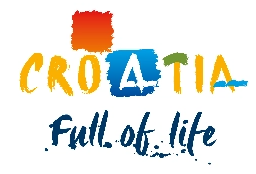





.jpg&w=3840&q=75)


The delicious shellfish of northwestern Istria
Whether farmed or wild, shellfish from northwestern Istria are exceptionally flavourful thanks to the clean sea environment. They are popular year-round, but their meat is particularly delicious in February and March, when you can taste them in numerous wonderful creations by local restaurants and konobas at the Shellfish Days festival.
6 shellfish you simply must try
Mediterranean Scallop (Pecten jacobaeus)
Appearance: Fan-shaped with irregular shells with 14-16 ridges. The upper shell is rounded, reddish-brown in colour with light and dark patches, while the lower shell is slightly convex, white, beige or purple. They are 10cm in size on average, and can grow up to 15cm.
Habitat: At greater depths, on the silty and sandy sea bottom. Those from the Novigrad area, where fresh river water and salty sea water mix, are the most prized.
How are they most often prepared: Grilled with olive oil and Mediterranean herbs, au gratin, boiled, raw, combined with hand-made pasta or rice.
.jpg&w=3840&q=75)
Mediterranean Mussel (Mytilus galloprovincialis)
Appearance: Mussels are dark-blue or black. They look like a lengthened triangle with one pointy end and one rounded end. They grow from 6 to 12cm. The meat of farmed mussels is yellowish-orange, while the meat of wild mussels is dirty white.
Habitat: Mussels grow in colonies attached to any kind of hard surface. They are the most common shellfish raised in Istrian farms.
How are they most often prepared: Buzara with white wine, garlic and parsley, or boiled with parsley, garlic and olive oil.
.jpg&w=3840&q=75)
European Flat Oyster (Ostrea edulis)
Appearance: The shells are irregular and asymmetrical, the colour of stone or grayish-white. They attach to rocks with their more concave shell. They can grow up to 13cm.
Habitat: Wild oysters most often grow in bays and canals at depths up to 10m. In Istria, they are most commonly farmed in Lim bay and Pula bay.
How are they most often prepared: Raw with a few drops of lemon.
Sea truffle (Venus spp.)
Appearance: Greyish or yellowish in colour, with symmetrical, rounded shells. They have a large number of ridges, and average from 3 to 4cm in size. They can grow up to 10cm.
Habitat: On silty and sandy sea floors, at depths of 0.5-20m.
How are they most often prepared: Buzara with white wine, garlic and parsley, or raw with a few drops of lemon.
.jpg&w=3840&q=75)
Noah’s Ark (Arca noae)
Appearance: These shells are shaped like small boats. They are dark greyish-brown or dirty greyish-black in colour. They have asymmetrical, ridged shells. They average 6cm in size, and can grow up to 10cm.
Habitat: They live in colonies on silty and sandy sea floors at depths of 2-10m. Their best-known natural habitat in Istria is along the coast of Umag and Novigrad.
How are they most often prepared: Buzara with white wine, garlic and parsley, raw with a few drops of lemon, or baked with cheese and garlic.
Queen Scallop (Chlamys varia)
Appearance: This fan-shaped shellfish can be brownish-purple, brownish-yellow, red, yellow, or orange. Their shells are symmetrical with many fine ridges. They can grow up to 6cm.
Habitat: On the sandy, shell-filled sea floor of sheltered inlets, at depths of 1-50m.
How are they most often prepared: Raw, baked, with pasta or salad.


Destinations
Additional Information


©2025 Colours of Istria. All rights reserved. No part of this site may be reproduced without our written permission.

















.jpg&w=3840&q=75)






